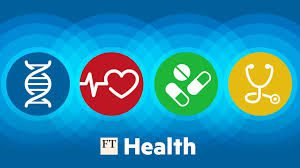What can you eat on a fluid restricted diet?
Kidney-friendly foods that count as fluid
- Coffee and tea.
- Gelatin.
- Ice chips or cubes.
- Ice cream.
- Juice.
- Milk and milk substitutes.
- Popsicles.
- Sherbet.
Why would someone be on a fluid restricted diet? A fluid restriction diet is generally medically advised for patients with “heart problems, renal disease, liver damage including cirrhosis, endocrine and adrenal gland issues, elevated stress hormones and hyponatremia“. Patients with heart failure are recommended to restrict fluid intake down to 2 quarts per day.
Does fluid restriction include food? Fluids are all foods and drinks that are liquid at room temperature. All drinks, Jello, ice cream, sherbet, popsicles, water ice, ice cubes, soup, custard, pudding, sauces and gravies count as fluids.
What counts in a fluid restriction? All liquids at room temperature count towards a patient’s fluid intake. This also includes some products that are classed as foods. This includes: Water • Cups of tea/coffee • Yogurts • Ice cream • Soups • Gravy • Milk on cereal • Prescribed oral nutritional supplement drinks (eg- Fresubin Energy).
What can you eat on a fluid restricted diet? – Additional Questions
Does yogurt count as a fluid?
Liquids and some foods are fluids
Food that is liquid at room temperature also counts as fluid. This includes foods such as ice cream, popsicles, freezies, yogurt, soup, ice cubes and pudding.
What drinks count as fluid intake?
The Eatwell Guide says we should drink 6 to 8 cups or glasses of fluid a day. Water, lower-fat milk and sugar-free drinks, including tea and coffee, all count.
How much fluid can you have on fluid restriction?
Liquid from both foods and drinks should be counted toward your daily liquid limit: 12 ounces (1 can) of soda (332 mL) 1 cup of juice (215 mL) or 2% milk (217 mL) 6 ounces of coffee (175 mL) or 6 ounces of tea (168 mL)
What is a 1.5 fluid restriction?
Limit the fluids you drink
Often 1 to 1.5 L (4 to 6 cups) per day is what is recommended for people with heart failure.
Is milk classed as a fluid?
Bottom line. To meet your fluid needs throughout the day, choose water most often. Remember that other fluids like milk, coffee, tea and juice also count towards your daily fluid intake.
How are fluid restrictions determined for renal patients?
Determining fluid restriction
Factors such as weight gain between treatments, urine output and swelling are considered. If you’re on hemodialysis, your weight is recorded before and after your dialysis session. Your nurse uses weight changes to help determine how much fluid to remove during dialysis.
What color is urine when your kidneys are failing?
When kidneys are failing, the increased concentration and accumulation of substances in urine lead to a darker color which may be brown, red or purple. The color change is due to abnormal protein or sugar, high levels of red and white blood cells, and high numbers of tube-shaped particles called cellular casts.
How much water should a person with kidney disease drink a day?
When you have kidney disease stages 1 and 2, it is important to drink enough water—around 64 ounces, or eight glasses every day.
How much water should a renal patient drink?
Just exactly what does restricting fluids mean? For most people on dialysis, restricting fluid means limiting yourself to three or four 8-ounce cups of fluid a day. If you put out any urine, you may be able to have a little more. Ask your dialysis team how much fluid you may have each day.
How can I restore my kidney function?
What can I do to keep my kidneys healthy?
- Make healthy food choices.
- Make physical activity part of your routine.
- Aim for a healthy weight.
- Get enough sleep.
- Stop smoking.
- Limit alcohol intake link.
- Explore stress-reducing activities.
- Manage diabetes, high blood pressure, and heart disease.
Is lemon water good for kidneys?
Helps prevent kidney stones
Lemon water helps prevent painful stones in those deficient in urinary citrate (a form of citric acid). More importantly, increased fluids help prevent dehydration — a common cause of kidney stones.
How can I lower my creatinine level quickly?
Here are 8 ways to naturally lower your creatinine levels.
- Don’t take supplements containing creatine.
- Reduce your protein intake.
- Eat more fiber.
- Talk with your healthcare provider about how much fluid you should drink.
- Lower your salt intake.
- Avoid overusing NSAIDs.
- Avoid smoking.
- Limit your alcohol intake.
What foods to avoid if your creatinine is high?
Eating large amounts of protein, such as meat, fish, chicken, eggs, cheese, milk and yogurt can affect creatinine buildup, says Beaumont Hospital Kidney Centre. Therefore, those with high creatinine should seek dietary advice on how much protein to consume as too much protein can be detrimental.
Does walking reduce creatinine?
Has walking contributed to the increase of my creatinine? Walking every day should be a very healthy form of exercise and should not change your serum creatinine in any way.
Can creatinine levels go back to normal?
High creatinine levels may indicate one of several underlying health conditions requiring medical treatment. Following treatment of the underlying cause, creatinine levels should return to normal. Creatinine is a waste product of the muscles.
What is a worrisome creatinine level?
Creatinine levels of 2.0 or more in infants and 5.0 or more in adults may indicate severe kidney damage. People who are dehydrated may have elevated creatinine levels.
Does vitamin D increase creatinine levels?
Short-term vitamin D receptor activation increases serum creatinine due to increased production with no effect on the glomerular filtration rate.
